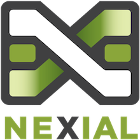Introduction

What is Nexial?
Nexial is a test automation platform based on a hybrid test design approach. At its core, its design centers around the following goals:
-
Lightweight Application Architecture
Nexial requires very simple installation (just unzip) and low computing requirement to get started. It is designed to run standalone, within a CI/CD pipeline, and within a cloud environment. -
No Coding Required
Programming/Coding should not be an entrance requirement (hindrance?) to Test Automation. Instead, automation engineers can focus on system-user interaction, acceptance criteria and domain knowledge to shorten the quality feedback loop and raising quality consciousness across the team. Since no coding is required, it is faster and less costly to develop automation scripts with Nexial. With Nexial, automation engineers can elaborate the test steps, scenarios and data using spreadsheets. Nexial also supports the execution of external programs so any pre-existing scripts can be launched as part of a test execution. -
Hybrid Test Design Approach
For the most part, test automation is the combination of ‘Action’ and ‘Validation’: action to simulate interaction and workflow, and validation to assert an expectation. Using a hybrid approach, Nexial combines the complimentary techniques of keyword-driven automation and data-driven automation, plus a few of Nexial’s own, to create a test automation platform that yields a high level of readability, flexibility and reusability. Some would regard Nexial as an archetype of the Codeless Automation framework. -
Open and Practical Test Artifact
Using a structured format such as a spreadsheet as the basis of all test artifacts might seem restrictive to some. On the flip side, it provides the consistency and predictability to keep the entire project team equitably informed. Quality aware is elevated across the board because Nexial generates a consistent, open and easily consumable test report. -
Promote Cohesion and Transparency
By providing consistent format and convention across the test script, data and suite, Nexial provides a uniformity across the design and execution aspects of software testing. The test steps, the associated test data and the execution result are immediately visible to all. Such test output provides a clear indication of the quality objectives that is consumable to both technical and non-technical audience. -
Application platform agnostic
Nexial is designed to automate desktop applications (Windows only for now), Web application via any of the major web browsers, service application (HTTP, REST, SOAP) and database application (all major databases). In addition, it comes with a growing set of features to manipulate format-specific file content (PDF, Excel, CSV, XML, JSON, etc.) and common data manipulation capabilities. All these capabilities are accessible via the same spreadsheet.
What can I do with it?
One can use Nexial to create test automation across a myriad of applications such as desktop applications, web applications, service applications, etc. Coding is not required. Via simple conventions and test design guidelines, one can create test automation that maintains independence between the test (test steps) and data, and flexibility to mix-and-match test scripts and test data at execution time.
How does it work?
Here is the basic workflow:
- Automation engineer captures test steps and validation using spreadsheet (test script).
- Automation engineer enters test data into a separate spreadsheet (test data).
- Automation engineer executes Nexial by specifying the spreadsheet to run.
- Nexial reads the test script spreadsheet and test data spreadsheet.
- Nexial interprets each test step and the associated test data, and executes the appropriate automation command against the specified AUT.
- Nexial records the outcome of each test step to the output file.
- When all the steps in the spreadsheet have been executed, the output file is available for review and distribution.
Using Nexial-designed spreadsheet with a dropdown (or pull-down) of commands (keywords), Step 1 can be greatly simplified.
Step 3 through 7 can be a part of a larger CI/CD orchestration.
What do I need to get started?
In a nutshell, one would need:
- A computer (PC, Mac, and *NIX)
- JDK 17+ (latest recommended!)
- Nexial distribution
For more details and step-by-step instruction, check out the Install Nexial page.
Where can I go for more help/support?
For online documentation, start here. For additional questions, inquiries or help, submit your request to our GitHub issue. Likewise, for any suggestion on new features for Nexial, submit an issue as well.
What can I expect from future release?
Even before it’s 1.0 debut, Nexial has been in use by multiple projects. But in a way, this isn’t a ‘1.0’ release – at least not in the typical sense. Calling it ‘1.0’ is just a way to officially mark its progress, and to give us a way of comparing against future releases. The cadence we would like to keep would be two-fold:
- Daily DEV builds, as we do today. For newer features and early access patches, this would be the method of distributing.
- Monthly
MAJOR.MINORrelease. Mostly likely we would keep to thex.yrelease schema wherexstarts from1andyis a number between 0 to 9.
Ready to get started? Click here.